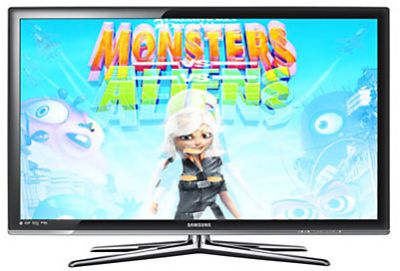3D TV – What You Need To Know About Home 3D
 3D TV sets for the home are becoming increasingly popular, although they’re not for everyone.
3D TV sets for the home are becoming increasingly popular, although they’re not for everyone.
The UK broadcast industry is taking 3D to a new level, and we explore 3D in more depth.
3D TV in the UK?
3D on TV is something that UK broadcasters have dabbled with over the years,and normally involved wearing silly red and blue 3D glasses. Since then, things have moved on, and it’s now possible to get a decent 3D experience at home with the latest generation of 3D TV sets. The only problem at the moment, is what to watch.
In 2009, Sky announced that they were about to start taking 3D very seriously, and this was followed by the release of a dedicated 3D TV channel, Sky 3D in 2010, and TV set manufacturers are working hard to bring more 3D TV sets to the market at decent prices. Home 3D looks set to become big business.
Indeed, with cinema attendance dropping, we can expect to see a string of blockbusters coming to our screens in 3D, as shown by the relative success of “Monsters Vs Aliens” in the UK in 2009, and the release of the visually-stunning Avatar in 3D.
3D TV sets now available in the UK
Samsung won the race to release the first consumer 3D TV set in the UK. In April 2010, Samsung released their UE40C7000 and UE40C8000X LED HD TV sets. These are 40 inch models, and use Active Shutter glasses to achieve the 3D effect. The TV sets also have Freeview HD built-in.

The Samsung UE40C7000 3D TV set hit the shops in mid-April 2010 for a price of £1,799, with a twin-pack of Active Shutter glasses costing £149. Available from John Lewis Online.
3D TV channels in the UK
Sky launched the UK’s first dedicated 3D channel on the 3rd of April 2010. Sky 3D is available on Sky Channel 217, and is part of the Sky World subscription package.
More details at www.sky.com/shop/3d/home
How does 3D TV work?
 Most people will be familiar with the classic red-and-blue 3D glasses. These were used for the Channel 4 week of 3D in November 2009. This uses the ColorCode 3D system, developed in Denmark. 3D footage is shot on stereoscopic cameras (twin-lens), then encoded with ColorCode before broadcast. Users needed to wear special glasses with amber and blue lenses to see the 3D effect.
Most people will be familiar with the classic red-and-blue 3D glasses. These were used for the Channel 4 week of 3D in November 2009. This uses the ColorCode 3D system, developed in Denmark. 3D footage is shot on stereoscopic cameras (twin-lens), then encoded with ColorCode before broadcast. Users needed to wear special glasses with amber and blue lenses to see the 3D effect.
It’s accepted that the twin-colour 3D glasses are OK for use to get a taste of the 3D experience, they’re really only useful for “gimmick” 3D viewing.
The 3D experience in cinemas, and now in the home market, use one of two technologies, Passive or Active:
- Passive: This uses a set of dark glasses with polarised lenses that filter out the two images on-screen differently for each eye. The brain does the hard work in putting together the 3D image.
- Active: These are powered glasses, and rapidly switch on and off each lens of the glasses (50 times a second per eye), to give you the 3D effect. The first home 3D from Samsung uses Active Shutter glasses, which cost around £75 each.

Samsung Active Shutter Glasses, Available from John Lewis Online
Active Shutter Warning
In April 2010, Samsung’s Australia site issued some health guidance information on viewing with their Active Shutter glasses. The full article is on the Samsung website, but here are the highlights:
- Viewing in 3D mode may also cause motion sickness, perceptual after effects, disorientation, eye strain, and decreased postural stability. It is recommended that users take frequent breaks to lessen the likelihood of these effects.
- Watching TV while wearing 3D Active Glasses for an extended period of time may cause headaches or fatigue.
- We do not recommend watching 3D if you are in bad physical condition, need sleep or have been drinking alcohol.
- Some viewers may experience an epileptic seizure or stroke when exposed to certain flashing images or lights contained in certain television pictures.
3D TV Milestones:
Here you’ll find a quick list of recent TV events involving 3D specials or experiments.
- August 2009 – Virgin 1 showed “Chuck” in 3D, with glasses given away free in TV and Satellite Week.
- November 2009 – Channel 4 ran a week of 3D content – including rare footage of the Queen’s 1953 coronation, plus an up-close “The Queen in 3D” two hour special. There was also a showing of Jaws in 3D, Derren Brown’s 3D Magic Spectacular and a “Best of 3D” compilation show. The week of 3D ran from the 16th November 2009.
- April 2010 – Sky launched the UK’s first 3D TV channel, on channel 217
3D TV FAQ
Got a question? Ask in our forum


I am considering buying a 3D Smart television but am wondering,are there enough progtames on normal TV to justify the expense.I will not have Sky due to the expense.Thank you